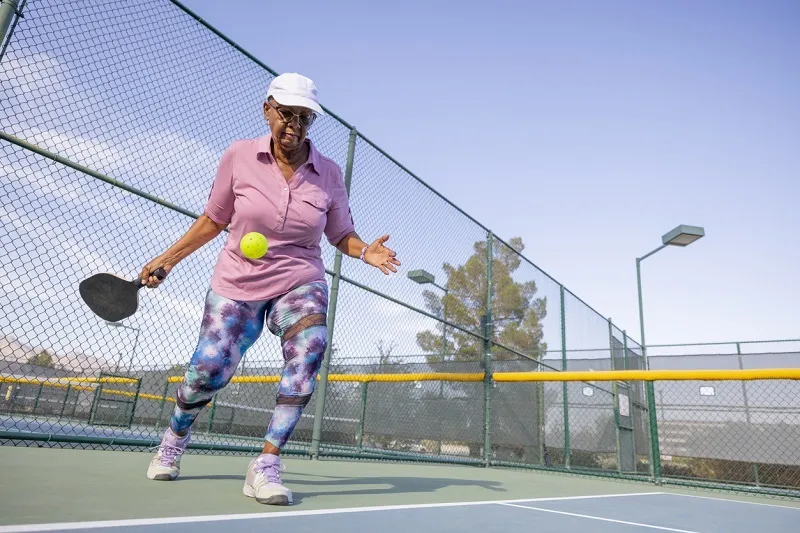Pickleball, a sport growing in popularity for its accessibility and social appeal, offers a fun way to stay active. However, like any physical activity, it comes with the risk of injuries. Surprisingly, many of these injuries can be traced back to issues not immediately obvious—the mobility and biomechanics of our spine, particularly at the scapulothoracic junction and lumbar spine.
Anatomy and Physiology: The Foundation of Movement
To understand how injuries occur in pickleball, we need to delve into anatomy.
The spine serves as the central axis of our body, supporting and coordinating movements from the ground up. The scapulothoracic junction, where the shoulder blade (scapula) meets the rib cage (thoracic spine), plays a critical role in shoulder stability and movement efficiency. Meanwhile, the lumbar spine, situated in the lower back, provides foundational support and mobility for the entire body.
Power Transfer in Pickleball: From Ground to Ball
Pickleball is a game of agility and precision, requiring swift movements and coordinated strikes. The power generated from the ground, through the feet and legs, transfers up through the kinetic chain to the shoulders and hips, ultimately directing the ball’s trajectory. This seamless transfer of power relies heavily on core strength and coordination, which stabilize the spine and facilitate efficient movement patterns.
The Impact of Poor Mobility and Biomechanics
When mobility and biomechanics are compromised—often due to poor core strength and coordination—the body compensates in ways that can lead to injuries. In pickleball, issues like improper posture, overuse of certain muscle groups, and biomechanical inefficiencies can strain the spine and increase stress on joints like the elbows and knees. For instance, a weak core may lead to improper shoulder mechanics during serves or overhead shots, increasing the risk of shoulder injuries.
Connecting Elbow and Knee Injuries to Spinal Health
Elbow and knee injuries in pickleball are frequently linked to underlying issues in the spine. For example, a player with poor lumbar spine mobility may compensate by altering their gait or stance, placing undue stress on the knees during lateral movements. Similarly, insufficient stability at the scapulothoracic junction can lead to shoulder and elbow injuries due to improper force transmission and control during swings and volleys.
Educating for Prevention: Strengthening the Core
To mitigate these risks, focusing on core strength and mobility is crucial. Strengthening the muscles surrounding the spine—such as the abdominals, obliques, and paraspinal muscles—improves stability and enhances movement efficiency. Incorporating exercises that promote flexibility and range of motion in the spine and shoulders can further support injury prevention efforts. Caution however should be used here as the key takeaway here is the coordination between joints. That said, having strength in the shoulders, hips and core are great however not without good coordination.

What Does Coordination Mean?
It refers to the ability to appropriately recruit different muscles groups to perform a specific action at a specific time. For example, knowing that the ball is coming towards you and you’ll have to side step to get in. The muscles of the hip have to activate to side shuffle however if the abdominals and paraspinals don’t simultaneously activate, your shoulders will fall off the top of your hips. In the same scenario, the pelvic floor and inner thigh muscles need to prepare to lengthen in order to provide eccentric strength and prevent pelvic bones from separating. If the plantar fascia isn’t flexible, as the foot that steps to the side first gets ready to plant, we risk straining and walking away with pain along the arch.
Conclusion
Injuries in pickleball are often more than just a result of acute impacts or overuse; they reflect underlying issues in mobility, biomechanics, and core strength. By understanding how power flows from the ground through the spine to the ball, players can appreciate the importance of spinal health in their performance and injury prevention strategies. Prioritizing core strengthening and biomechanical awareness can not only enhance gameplay but also promote long-term musculoskeletal health.
About the Author
Dr. Sarah Crawford, the founder of Anchor Wellness Center & Anchor Wellness Inc. With a Doctorate in Physical Therapy and certifications in Orthopedic Manual Therapy, Myofascial Trigger Point Therapy, and Pilates Instruction, Dr. Crawford is a dedicated advocate for holistic wellness. Her expertise drives the mission of Anchor Wellness, guiding individuals toward optimal health and mobility.



